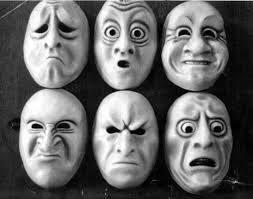I'll admit it - I have been going on a bit about description lately. And, let's face it - this is an important element of anyone's writing technique. Description puts the reader there, and without it, things kind of get lost fast. Good, descriptive writing provides more than just a description of the setting; it provides an anchor for all the story elements and lets them evolve more organically. So, yes, I think the subject deserves a few posts now and then. However, this time I thought it would be interesting to explore what kind of description we can use.
Often, description is an immediate appeal to the five basic senses (there are actually many more than five senses, but for now let's stick with sight, sound, smell, taste, and touch). These sensory cues bring a person very much into the scene because it recreates exactly what the reader would sense at that moment. This is what we learn when we first start writing, and it's a great foundation piece. However, the five senses is just a starting point, and they actually are not the only starting point we can work a description from.Let me offer you a link to a post I wrote over four years ago. The first three paragraphs of this particular entry, entitled "The Emotional Description," described the house where I grew up. The rest of the post is about the inclusion or omission of details depending on whether or not they were important to the purpose of the piece. In that entry, I wrote three paragraphs and didn't use one sensory element to describe the house or property. Rather, I used emotive anchors and packaged feelings to create the scene. This served the same purpose - the put the reader there, but the reader is there in a much different way. They are not seeing what I see but rather envisioning what I feel. Those five senses are not the appeal - the main draw is how the writer is interacting with the setting.
Sight, sound, smell, taste, and touch are all great descriptors and they have their place, but a writer does themselves a great service when they practice descriptions outside of those boundaries. As we get in touch with describing elements of a story with emotional elements, we secretly remind ourselves what makes a particular element so important to the story. In describing my childhood home in emotional terms, it places me, as a writer, deeper within that emotional pool, and my reactions will naturally reflect that immersion.
A great writing exercise for those who like a challenge and occasionally need a prompt is actually very simple. Sit down with your writing stuff, and describe the first thing that catches your attention. Notice how I didn't say, "catches your eye" - there's a reason. Your attention responds to things more than sight - it is called by a different force, and is usually a good subject for writing about. Of course, the key to this exercise is to not write a descriptive blueprint of whatever you choose, but rather discuss how you respond to different elements. Write about the subject in a way where the reader will feel your reactivity.
The more you do this exercise, the easier it will be to bringing the reader into the scene and connecting them in the way you are feeling. That is a great form of engaged writing, and a tool definitely worth keeping in your writing bag.


No comments:
Post a Comment